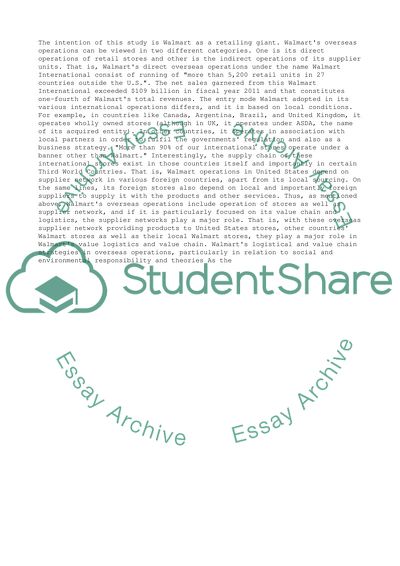Cite this document
(“Walmart: Logistics and value chain, overseas operations, social and Assignment”, n.d.)
Retrieved from https://studentshare.org/business/1393214-walmart-logistics-and-value-chain-overseas-operations-social-and-environmental-responsibility-and-theories
Retrieved from https://studentshare.org/business/1393214-walmart-logistics-and-value-chain-overseas-operations-social-and-environmental-responsibility-and-theories
(Walmart: Logistics and Value Chain, Overseas Operations, Social and Assignment)
https://studentshare.org/business/1393214-walmart-logistics-and-value-chain-overseas-operations-social-and-environmental-responsibility-and-theories.
https://studentshare.org/business/1393214-walmart-logistics-and-value-chain-overseas-operations-social-and-environmental-responsibility-and-theories.
“Walmart: Logistics and Value Chain, Overseas Operations, Social and Assignment”, n.d. https://studentshare.org/business/1393214-walmart-logistics-and-value-chain-overseas-operations-social-and-environmental-responsibility-and-theories.


